Ernie's Best Boat Projects for Beginners
There's Simple, and then there's Easy.
There are several ways to build boats. These range from those that take great amounts of skill, down to those that are simple for anyone.
'Simple' and 'easy' are not the same thing, by the way.
A dugout sounds easy to build...
1. find tree
2. cut tree down
3. remove bark
4. shape outside of tree to boat shape
5. dig out the inside of boat-shaped tree to make room for you and your stuff.
However, it's not simple. There are lots of hidden factors that go into building a dugout.
1.What kind of tree is important. Ironwood, for example, would make a bad dugout because it is so heavy, it sinks in fresh water. Western red cedar makes wonderful dugouts, but needs care in carving so it won't float too high and be unstable.
2. Cutting down a tree always seems easy until you have to figure out how to get it to fall (safely) so you can work on it. A tree large enough to make a good dugout is not a small tree. If it's not your tree, expect to pay about the same for it as for a decent used car.
3. There are several ways to remove bark, but only one that is fast and easy. The fast and easy way depends on what time of year you fall the tree. At a very specific time of year, the bark will come off very easy. Miss this window, or let your log sit 2 days once it's down, and you will spend 5 times as much time and effort for a worse result.
4. Here you find out how good your tree selection was. First you shape the boat by removing all of the sap wood. If you picked a tree too small, your won't get the boat you hoped for, 'cause you're going to be removing about 6 inches of wood from all around the tree. The boat hull should come mostly from one side of the tree. The core of the tree needs to be above the water line of the boat. So you best pick a big tree. Can you hold a boat shape in your head the entire time, while whacking away with an ax?
5. When you have the outside shaped, now remove the wood from the inside. Make the sides the right thickness so it will be light and strong. Figure out the fittings inside like seats, cargo, etc. Don't punch any holes through, or crack your wood.
Did you plan to steam it and open out the shape? Hope you kept this in mind all along, 'cause you'll need high, even sides for this option.
It's easy to do (if you know how), but not as simple as it sounds. You have to do a lot of things right in order to get a good boat from that log. It's a lot of work, and you can't go back if you screw up. And then it cracks, or rots, and there goes your boat.
So that's Easy, but not Simple.
Plywood Boat Kits and Prams
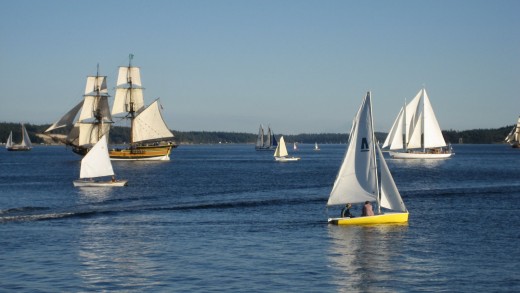
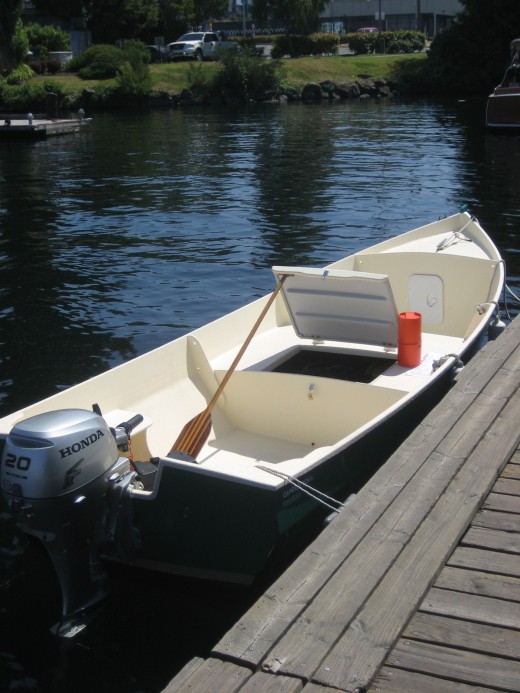
How about Simple, like a Kit?
Many DIY boatbuilders start with a plywood pram or small dory:
- Get a pattern or kit,
- cut the plywood to shape,
- attach it together with marine glue, screws, staples, etc.
- Add a few layers of fiberglass, or some caulking, to outside and inside.
- Paint it.
It can be done and out on the water in time for opening day.
If it's the right pattern, the boat may be stable, easy to row, and comfortable to sit in. But most of the time, it turns out to be tippy, too small, or too heavy to load onto the car. If you got the wrong pattern or size, start over.
If the plywood, glue, fiberglass, and fasteners were chosen and combined correctly, the boat will be sturdy. If you used indoor plywood, non-stainless screws, the wrong hardener for the glue, or mixed the fiberglass resin wrong, it will always be weak or goopy. It may fail catastrophically. Start over.
You may get lucky. Your boat may serve you well for years or decades. But inevitably there will develop a leak, crack, or rotten spot. You never needed to judge its shape while building it, and you may not notice that it's a different shape now. Your son jumps on the back, and the transom falls off. Start over.
If you decide to go for a bigger, more durable, more graceful, or more fix-able boat, you will have to learn a whole new set of skills. About the only thing that will come in useful from your plywood boatbuilding experience is that you now know how to be patient and careful, so you won't have to start over.
I started with a plywood pram at age 9, and built a perfectly good, very boring, little boat. As an adult, I built another one, and I didn't use any more skills than I needed when I was nine.
I am NOT going to start a novice boatbuilder with Simple Kit Boats. Easy will get you only so far, and then leave you sitting around with no new skills to tackle other projects.
Skin on Frame
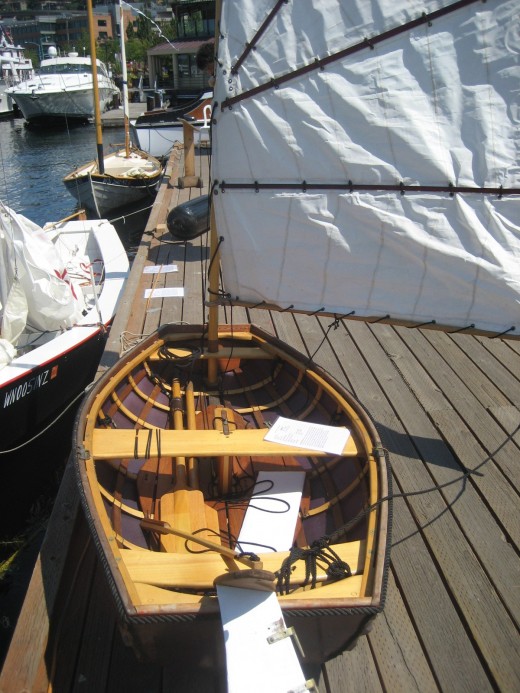
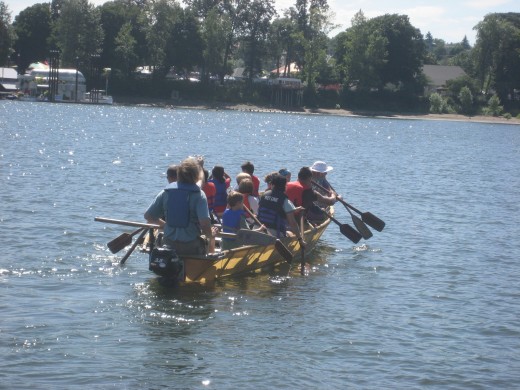
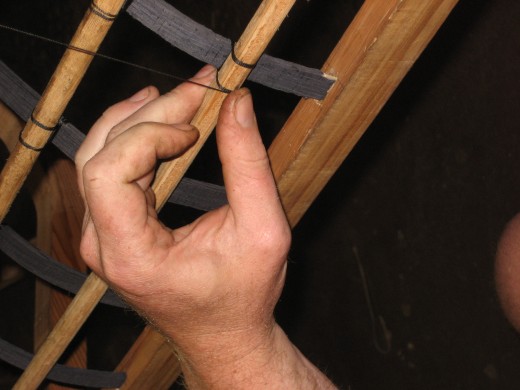
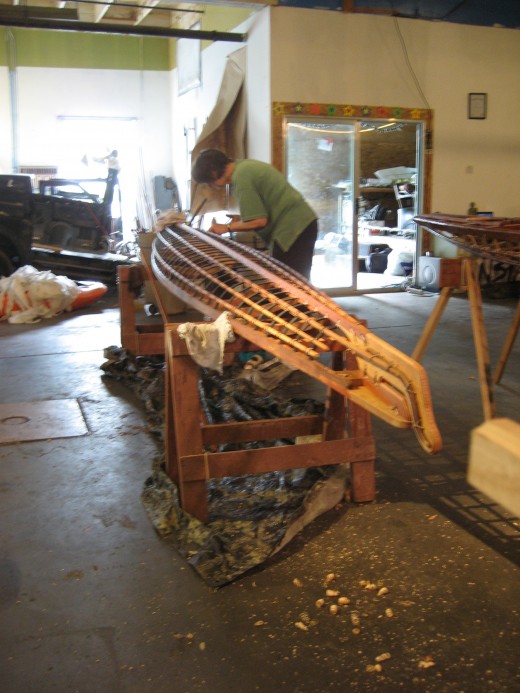
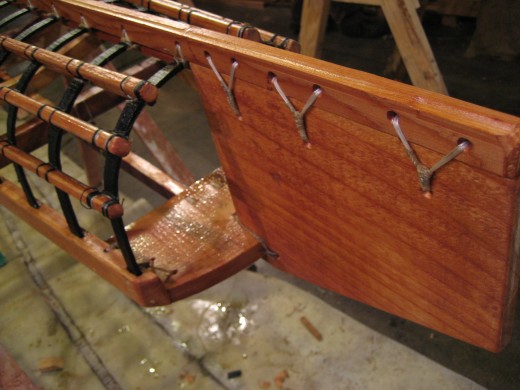
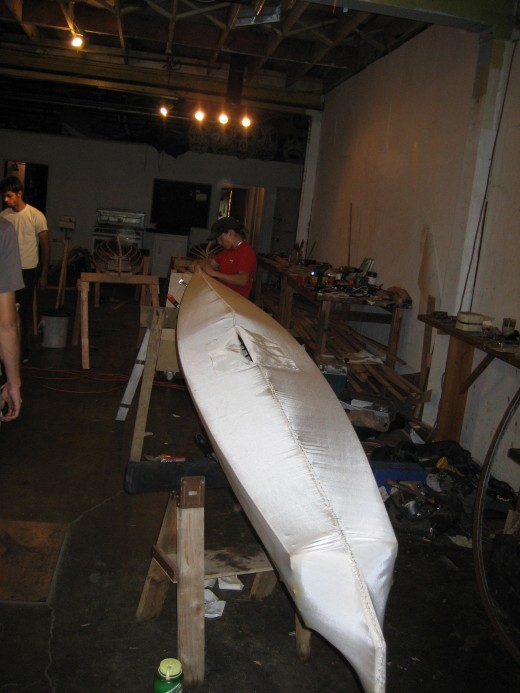
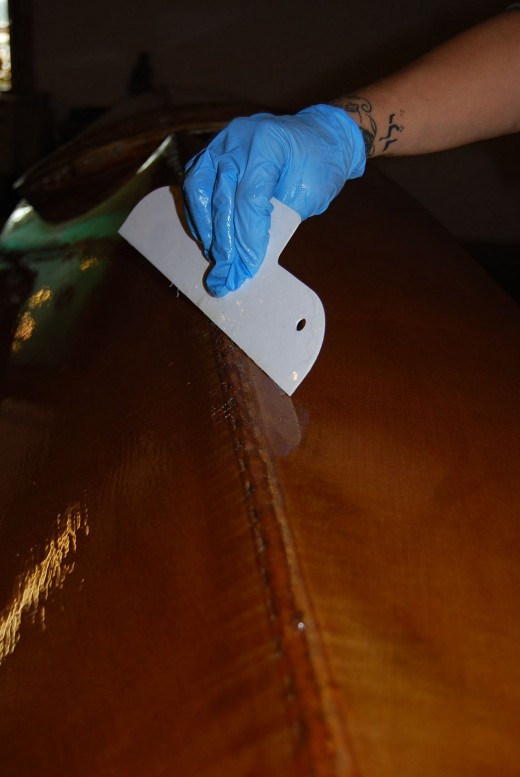
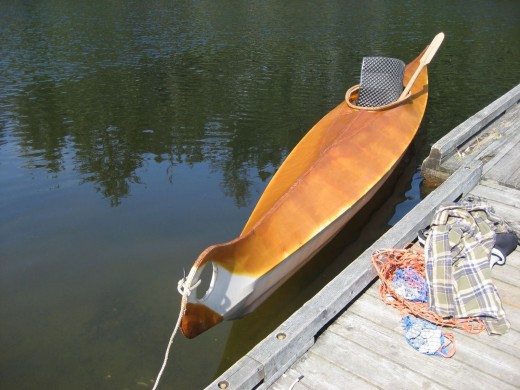
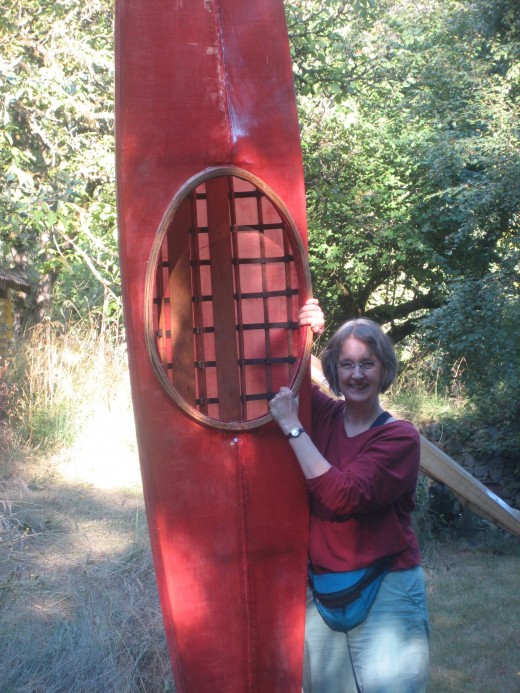
Simple and Adaptable
Now that I've tried a bunch of techniques, and seen others try them, my first choice for a beginner would be a Skin on Frame kayak or canoe.
See if you notice the differences in the process:
- Use your body measurements to determine the length and width of your boat, based on traditional design formulas. Your boat fits you.
- Slice up 1-2 boards of straight-grained wood. Shape and sand large pieces.
- Form the outline of the boat with stem, stern, and gunwales. Check the curves. Cut in place, lash, drill, and peg.
- Add Deckbeams, ribs, and stringers. Stand back to fair the curves.
- Adjust any pieces that don't quite fit, and lash tightly.
- Oil the frame. Let it dry. Make hatch coamings.
- Stretch the fabric around the wood. Tighten the skin evenly. Check the curves again. Color if desired.
- *Mix small batches of 2-part polyurethane and coat the fabric thoroughly.
- Add runners or skegs (if desired) to protect the bottom for beach and surf.
* This is the only step that needs to be done right the first time, or you are set back 1 step and a chunk of change.
The difference is in the adjustability. You can make your kayak as perfect, or as sloppy, as you want. Redundant, flexible skeletons are very forgiving. You can usually tweak any part without losing the work you did on the other parts.
There are two main complaints about skin on frame kayaks:
1) They take longer than plywood (a week or two of steady work), and
2) The skin can wear out or puncture
This is true - but it's true of any boat. Skegs help for rough beachings, and can be added later over a patched hole. The patch kit is easy to carry on board (fabric, aqua-seal, needle and thread). Expect to replace the skin in 5-10 years; unlike wooden hulls, you can't just sand and repaint. But it won't rot either.
Complaints about weight are rare. 18-foot, 40-lb boat, light enough to hang from your ceiling?
They make nice light fixtures too.
Building Skills with each project
When you take on a new kind of project, you expect to gain skills. As a beginner, manageable tasks are the fun ones. (Doable, interesting, and successful).
My favorite first skill for boatbuilding is to build by "Rack of Eye." This means there are no molds or frames; you shape the boat as you go, and in large part the wood dictates the form. You learn to trust your eye and adjust for your situation. If something goes wrong, you fix it. As a result, your boat becomes more beautiful as you work on it.
That's one reason I favor a Skin-on-Frame kayak for your first project.
I haven't even listed the other common DIY boat projects, strip-built or fiberglass, because I think they are a better second or third project. Building the molds takes skills you can learn easier by building an actual boat. Strip is beautiful, but time-consuming. Imagine getting half done only to realize you had one mold swapped and the thing has a slight S-curve or wasp-waist. When done perfectly, they are a woodworker's art project, and don't tend to spend as much time on the water as they deserve.
Here are the skills I think are important for beginning boatbuilders to learn. They also apply to operating, maintaining, and repairing a boat. And they will leave you ready to take on bigger projects for your kids and grandkids. Skin on frame teaches these skills in manageable doses.
Basic Boatbuilding Elements:
1. Rack of eye, or fairing.
Train your eye to see a fair curve, and adjust the curve if it is not fair.
(Fair curve= smooth curve that looks sweet, and moves sweetly through the water. A fair curve is not a mathematically precise thing. It's a shape like a bird, a boat, or a fish. Mathematical curves always looks artificial. Plan and kit boats need to be faired at scale to compensate for scaled-up inaccuracies. Boats built 'by rack of eye' are faired at each step.).
2. Basic skills with hand tools and simple power tools. (You shouldn't need a vacuum press or shipwright's bandsaw for your first project.)
- Carpentry: Carving, planning, scarfing, notching, mortise and tenon, pegging, framing.
- Ropework: lashing, knots, sewing, fitting,
- Finishing: sanding, painting, oiling, 2-part coatings, UV protection
- Special skills for compound curves: steam bending, planking, or laminating, if possible.
3. Confidence.
The project should not punish a beginner by letting one small error ruin the rest of the work. Are the most critical pieces the easiest to do right?
4. Visualization.
Can you see how the parts become the boat? Can you see yourself in it?
5. Suited to your boating skills and body.
If a boat is too small for you, or too heavy, or too tippy, or has sides too high to paddle over, you will not use it. Avoid changing a proven boat design on your first project. Ask a designer, teacher, or boatbuilder for advice on getting the boat you need.
7. Done in time to use it.
A good project gets you out on the water, where you can show it off, put these skills to use, and keep learning.
All of these skills are things you can use on any boat you ever build or operate. They allow you to see if something is wrong, fix it, and adapt to new situations (like lashing to a friend's roof rack or trailer). They are the historical legacy of the sailor.
I happen to think building skin on frame is the best way for a beginner to gain these skills.
Don't worry, it's as simple as making brownies. Just takes a bit longer.



